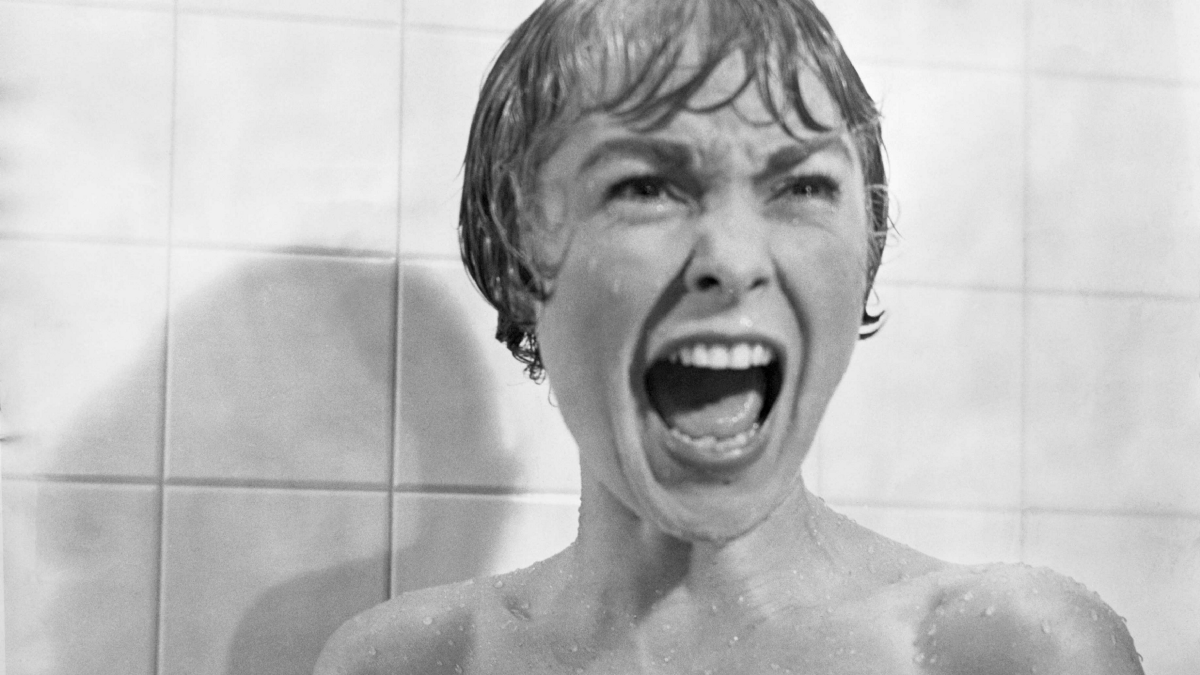What is Psycho about?
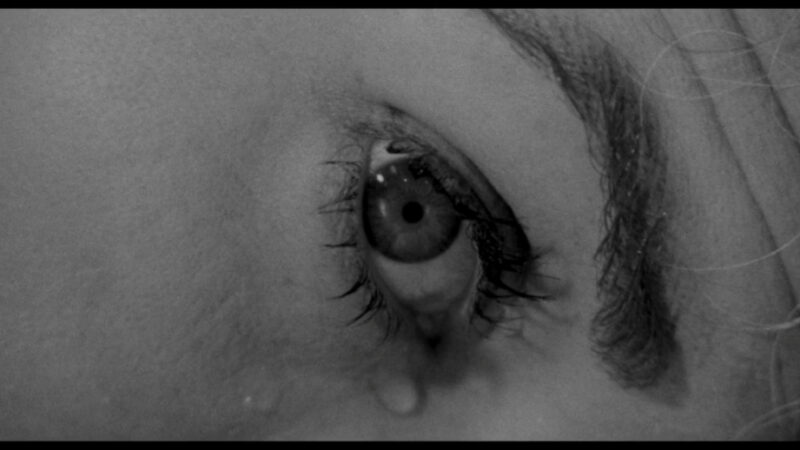
Psycho exists on two levels. On the surface level, we have a tale of a psychotic killer. Norman Bates is a seemingly regular man who lives with his mother. But before long, we discover that Norman is hiding a terrible secret about his mother—that she is dead, and that he dresses up as her and speaks as her. Norman clearly had an unhealthy relationship with his mother, and his need to please her has carried beyond her living body. He has held onto a sick attachment that has clouded his vision of reality. And because of it, his corrupted mind has no place in the society we’ve constructed.
On a deeper level, Psycho is all about the guilt we feel. We feel guilty for sins we have committed, and we’re paranoid that the world knows about our transgressions. The feeling that we’re being watched, that people see the worst in us, that deep down we are not fit for the rules of this society pervades the mind of someone like Marion. She tries to amend her wrongdoing, but is punished by Norman before she can return the $40,000 she stole.
The thing is: Norman didn’t know about the money. So what is she punished for? Did a higher power make her pay? Or was she simply a good person who went a little mad and got caught up doing a bad thing, who happened to be in the wrong place at the wrong time. Psycho then becomes a defamiliarization of that feeling of being watched, that feeling that we’ve done something unforgivable and there’s no way to fix it. It can make us feel…well, psychotic. The motif of voyeurism permeates the film, juxtaposing Marion and Norman’s dramatic struggles with our own regular lives.
Movie Guide table of contents
Cast
- Anthony Perkins – Norman Bates
- Vera Miles – Lila Crane
- Janet Leigh – Marion Crane
- John Gavin – Sam Loomis
- Martin Balsam – Private Investigator Arbogast
- John McIntire – Deputy Sheriff Al Chambers
- Simon Oakland – Dr. Richmond
- Frank Albertson – Tom Cassidy
- Pat Hitchcock – Caroline
- Vaughn Taylor – George Lowery
- Lurene Tuttle – Mrs. Chambers
- John Anderson – California Charlie
- Mort Mills – highway patrol officer
- Joseph Stefano – writer
- Alfred Hitchcock – director
The ending of Psycho explained

A recap of Psycho‘s ending
The very ending of Psycho consists of three parts. First, there’s the events that take place at Bates Motel. Lila is in the basement of Norman’s home when she discovers what she believes to be Norman’s mother—but really, it’s just a skeleton of the mother. Then Norman runs through the door wearing his mother’s clothing, yells, “I’m Norma Bates!” and lunges at Lila before being tackled by Sam.
Then we cut to a police station, where a psychiatrist explains to Lila, Sam, and a collection of police officers that Norman suffers from multiple personality disorder. Because Norman’s mother was jealous and possessive, Norman embodies her vindictiveness and lashes out at anyone whom she feels endangers Norman, threatens her moralistic values. On top of it all, we find out that Norman killed his own mother after finding her in bed with a man that wasn’t his father. So on some level, he has recreated his mother out of guilt.
Then we cut to Norman, who sits in a room by himself at the police station. To close the movie, we hear internal dialogue from his mother, who says:
It’s sad, when a mother has to speak the words that condemn her own son. But I couldn’t allow them to believe that I would commit murder. They’ll put him away now, as I should have years ago. He was always bad, and in the end he intended to tell them I killed those girls and that man… as if I could do anything but just sit and stare, like one of his stuffed birds. They know I can’t move a finger, and I won’t. I’ll just sit here and be quiet, just in case they do… suspect me. They’re probably watching me. Well, let them. Let them see what kind of a person I am. I’m not even going to swat that fly. I hope they are watching… they’ll see. They’ll see and they’ll know, and they’ll say, “Why, she wouldn’t even harm a fly…”
The meaning of Psycho‘s ending
Between these three parts, there is constant change in energy. When Lila discovers Norman’s dark secret, the atmosphere is intense, chaotic, terrifying. But in the police station, normalcy sets in when the psychiatrist explains everything to Sam and Lila. The climate is calm, meditative, logical. And then we finally cut to Norman, whose sinister story has been revealed. The aura then becomes chilling, alluring, villainous.
This unnerving environmental flux is very purposeful on Hitchcock’s part, meant to toy with the audience and our perception of madness. Norman’s psychosis is clear, as he believes his dead mother’s spirit inhabits his body. He seemingly switches between himself and his mother’s persona without thought or rationale, truly believing that he is both himself and Norma—this is not the behavior of a sane person.
But there’s more to Norman than meets the eye. Yes, he is psychotic. But as we discussed in the themes section, Norman was driven to madness because of unfortunate circumstances in his life. The isolation he experienced at his hidden motel made him irrevocably lonely, and the sadness and guilt he felt after losing his mother wore on him over the years, driving him to a point where he recreated his mother to combat the lonesomeness, the depression. Because nobody was there for him, he went a little mad.
“Mad” is a key word in Psycho, as we will discuss in the title section. In defending his mother to Marion, Norman says, “It’s not as if she were a maniac, a raving thing. She’s just goes a little mad sometimes. We all go a little mad sometimes. Haven’t you?” This serves as a wake-up call to Marion, who realizes that she indeed went a little mad when stealing the money.
In both Marion and Norman’s cases, they were driven mad because of the circumstances they were stuck in. For Marion, it was the lonesomeness she felt in society. But for Norman, it was the emotional isolation he felt by having nobody else around. In both cases, the cruel realities of the world drove them to commit immoral acts.
Yet…nobody is evaluating Marion and her crime. She realizes she went a little mad, that she was being pushed down the same path that eventually drove Norman to insane levels. But Norman is the one that’s evaluated, that’s normalized, that’s given thought and reason for his crimes. Because Norman was so lost and rejected that he committed murder, he became fit for study and reason. The psychiatrist’s conclusion feels sound and rational, putting us and the characters at ease.
But the psychiatrist doesn’t really understand Norman, does he? It’s all nothing but words and analysis. The psychiatrist doesn’t know the true darkness that lurks within Norman. We saw the frustration Norman felt when mental institutions were mentioned; we saw Norman spying on a beautiful woman as she changed her clothes—something his mother would have deeply disapproved of; we understood the deep, emotional attachment Norman shared with his mother during that conversation with Marion. We saw the tics and spasms, the impassioned turmoil of a man who so deeply missed the most important person in his life.
The ending then becomes a challenge to the viewer. Maybe Norman is a “psycho.” But couldn’t anyone be driven to this state? Anyone who’s lost a loved one and felt they couldn’t recover; anyone who’s felt immense loneliness and solitude; anyone who committed a terrible crime and felt they could never amend for their sin…like Marion. Norman and Marion lost touch with reality because reality lost touch with them. They became outsiders who could never feel at home because society rejected them for what they had become.
So when Norman sits there at the end of the movie, imagining what his mother would say, he’s hopeful that people will see him refusing to swat the fly. He wants to give off the image of normalcy, that he can be cured. But we know it’s an act. We know the madness that lurks beneath—the madness that’s become so unhinged that it feels irreversible. Until this kind of pain and hurt is truly understood—until people like him and Marion are vindicated for their sins—it’s hard to believe they can find a place in this cruel, confusing world. True understanding requires society to evaluate itself as well as the people affected by its rules.
We can study madness all we want. But madness, inevitably, persists. And our inability to find the root of madness will forever drive us…well. You get it.
The themes and meaning of Psycho
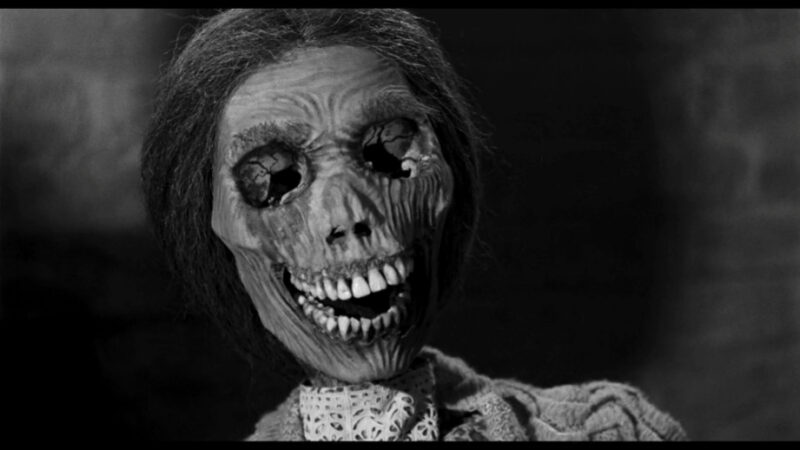
Being driven to madness
The most significant theme and the underlying meaning lie right within the title of the film. As we will discuss in the title section, the word “psycho” works on two levels. On a purely surface plot level, Norman Bates is the psycho. He suffers from multiple personality disorder and kills anyone whom he believes his mother would detest. But on a deeper level that becomes a psychological observation of society (and everybody watching the movie), Marion Crane becomes an example of how a “psycho” exists within all of us. Or at least how easily an ordinary person could be driven to madness.
At the end of the movie, a psychiatrist explains Norman’s behavior as multiple personality disorder. He has a clean, easy answer to explain away Norman’s psychosis. But we know that Norman’s psychosis runs much deeper (and darker) than the psychiatrist lets on. We’ve seen the lonesomeness, the detachment, the dejectedness he feels living alone in this parents’ barren mansion. As time passed on, Norman lost his touch with reality because he lost his touch with society. And instead of trying to understand his deeply troubling background, the doctors and police simply label him as “mad.”
If isolation, if feeling rejected by society is all it takes to drive someone mad…then how close was Marion to madness? In a single spiritous moment, Marion was ready to throw away everything in her life. She was in a sexual relationship looked down upon by society, she felt smaller than rich men like Tom Cassidy, and she didn’t make much money in her secretarial job. Essentially, she already felt lesser-than, felt small within the rigid confines of society’s rules. And the further she felt the pressure, the closer she inched to madness—which is right when she meets Norman, the ultimate example of madness, the embodiment of a societal outcast.
So how close was Marion to madness? Isn’t this something that could happen to anyone?
The feeling that you’re being watched
From the moment Marion steals the money, she is constantly paranoid that she is being watched, that people will discover her crime. Often times she is making it up by playing out fake conversations in her head. But other times, as is the case with the highway patrolman and the car salesman, people are indeed suspicious of her behavior. It’s a loop: because she suspects suspicion, she draws suspicion. Thus, suspicion pervades her everyday.
But really, this feeling of voyeurism had persisted already. Alfred Hitchcock was smart to use an opening crane shot that traveled across the city into a hotel room—where Marion and Sam were sharing a steamy lunch break tryst. Their relationship is considered immoral by society because they’re not married, because Sam has debts—and Hitchcock highlights this uneasiness by sneakily bringing the very audience that will judge her into that hotel room (an interesting side note: Hitchcock used 50 mm lenses in the film to mimic human vision).
Even once Marion decides to return the money, when she believes she’s in the clear, Norman spies on her from an eyehole in the wall—then, before long, kills her. This becomes commentary that you can never truly evade judgement and indictment from others. Marion may have felt cleansed in that shower, but Norman came to remind her that her identity, her very ethos was forever jeopardized because of her decisions, because of the life she chose to live.
The prevalence of lies and deception
Lies and deceit almost become a game for Hitchcock in Psycho. Sometimes, we know when people are lying. Such as when Marion lies to Norman about her name, or lies to California Charlie about her reason for buying a new car. But other times, we have no idea who’s lying or why there’s confusion. Such as when Sam and Lila believe Norman lives with his mother…who’s been dead for years.
This becomes an interesting theme in a film where small town ideals are portrayed as good and moralistic. People like Sam and Lila and the sheriff are confused by all the lies and deception, curious to figure out why terrible things are happening to their ordinary lives. But the characters doing the lying, like Norman and Marion, are outcasts of society. They feel rejected and out-of-place with the lives they lead, so they constantly skirt around the truth to fit in.
This gives power to the mystery at hand. People like Arbogast and the psychiatrist want to make sense of oddity, to give logical answers that calm the waves of uneasiness. But what if the real culprits aren’t the ones who committed a crime? What if Marion and Norman were just lying and deceiving to fit into a society that doesn’t make sense in the first place? In a world that’s constantly judging them and trying to confine them to a set of uncompromising rules? The movie forces us to ask these questions, to sympathize with people like Marion and Norman.
Why is the movie called Psycho?
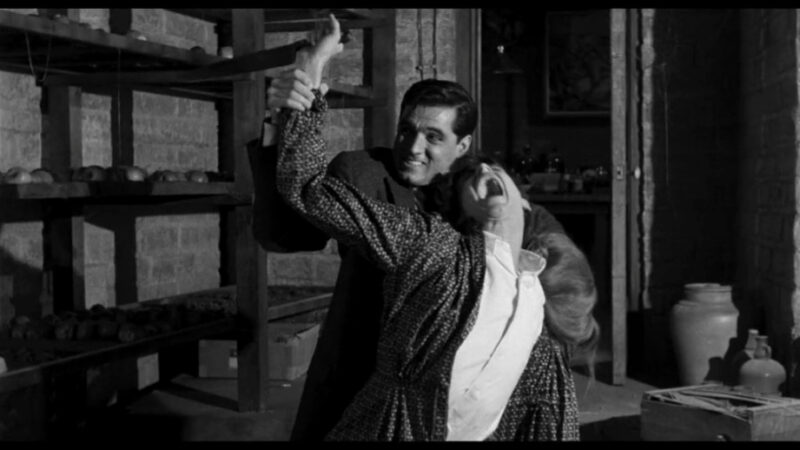
“Psycho” seems like a clear reference to Norman Bates, as he clearly suffers from dissociative identity disorder, aka multiple personality disorder. He is, by society’s definition, a psychopath. In this light, the movie is simple: Norman is a psycho who kills in the name of his dead mother and he must be stopped. He killed our heroine, Marion, who did something wrong but was planning to fix it. She didn’t deserve to die, and her friends now have a chance to avenge her death.
But Psycho goes deeper into the human psyche. Yes, Norman is a psycho…but is he so different from Marion?
Remember Norman and Marion’s conversation in the motel parlor? Marion asks if Norman has thought about committing his mother to a mental institution. To which Norman has an aggressive, enlightening response:
“It’s not as if she were a maniac, a raving thing,” Norman says about his mother. “She’s just goes a little mad sometimes. We all go a little mad sometimes.”
Norman then turns his attention to Marion: “Haven’t you?”
Marion isn’t crazy like Norman, who is certifiably “psychotic” in the medical sense. But Marion did go a little mad when she stole that $40,000. A normal, upstanding citizen would have taken that money to the bank like their job had instructed them to do. But Marion had a moment of madness. She decided to color outside the lines of society, even though she knew it would cost her job, her relationships, her entire livelihood. She was ready to give up everything just to make some money. And one has to wonder: isn’t that psychotic?
Herein lies the beauty of Psycho. Norman Bates is the ultimate psycho. He represents what can happen when nobody will listen to your problems; when parents have unhealthy strangleholds over their children; when society would rather place you in a mental institution than give you the comfort and care you deserve and need. He truly suffers from psychosis, which the dictionary defines as “a severe mental condition in which thought and emotions are so affected that contact is lost with external reality.” And during that conversation between Norman and Marion…we realize the two are not so different.
This reveals the power of defamiliarization—of making the familiar feel unfamiliar. Yes, Norman is certifiably psychotic in a way that Marion is not. But his manic presence makes Marion feel as though she’s done a horrendous thing by stealing the money. She sees Norman and his struggles with his mother. She sees a man who feels lonely and has nobody in his life. In Norman, she sees her own reflection—Marion sees her potential future. Their conversation convinces her that she has gone a little mad, and that she still has time to amend her wrongs.
So the title Psycho isn’t just a reference to a little psychopath, but also to the feeling of losing touch with reality. Marion already felt like an outsider, given her immoral, sexual relationship with Sam. And she felt she could get ahead, she could build a brand new life with the stolen money. The rigid rules of society made her feel trapped, like she couldn’t move forward—so she broke the rules and ran away. But by doing so, she risked everything she had built.
So after Marion dies, the pursuit of her killer becomes an interesting self-evaluation for society. Marion must be avenged—society can’t continue to subjugate people for their mental struggles. Which means punishing Norman for his sin. But doesn’t Norman deserve the same level of comfort and care? Doesn’t he also need someone to listen to him, to help him during this trying period? Does Norman deserve to be branded as a psycho? Is he really so different from Marion? The characters don’t necessarily have to struggle with this dilemma—but the viewers do.
Important motifs in Psycho
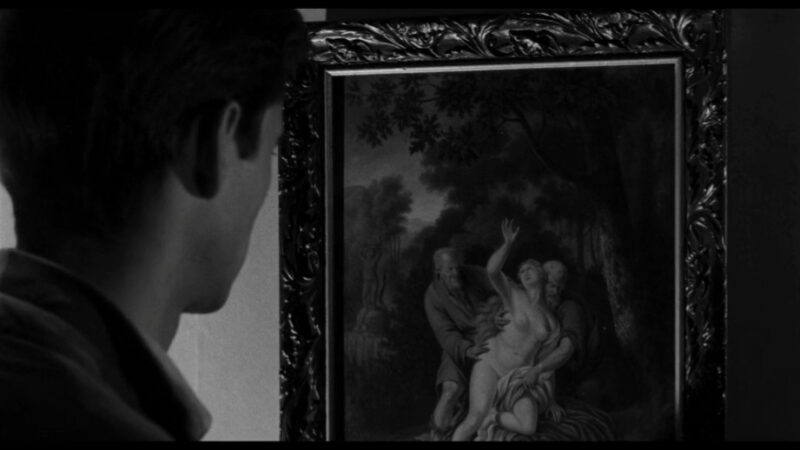
Birds
Birds are quite a common motif in Hitchcock movies. Whenever you see birds in a Hitchcock movie—for instance, in the movie…The Birds—something ominous is usually about to happen. And it’s no different in Psycho, as Norman and Marion discuss Norman’s taxidermied birds the night he kills her. Norman knows all about stuffing birds, but very little about live birds. This becomes a perverse foreshadowing of Norman, who struggles to exist with living people in the world. He is most attached to someone who is dead: his own mother. And much like his birds, Norman is stuck in one place—the Bates Motel—unable to fly away, to live his own life and meet new people, to escape the hell he’s created for himself. The birds are constantly framed preying over Norman, mimicking the stranglehold his own mother has over him.
There are also funny asides to birds, such as Marion’s last name (Crane) and Norman’s general bird-like behavior. Hitchcock always populated his films with these crumbs, believing they enlivened his characters and reinforced the themes. In his famous interview with François Truffaut, Hitchcock said of Psycho, “Owls belong to the night world; they are watchers, and this appeals to [Norman’s] masochism. He knows the birds and he knows that they’re watching him all the time. He can see his own guilt reflected in their knowing eyes.”
Mirrors
Mirrors are used to force characters to confront themselves, to reckon with what they’ve done or what they believe. Hitchcock constantly frames Marion and her reflection in the same shot, yet Marion constantly refuses to look at herself in the mirror. Hitchcock is referencing both the normal side of Marion and the mad side that breaks out and steals $40,000.
This foreshadows what we’ll learn later about Norman, who exists as two people. Marion refuses to confront the madness of what she’s done. And Norman forces her to perform some introspection. Hitchcock takes it to the extreme at the end of the movie when Norman smiles into the camera—a smile that almost exactly mimics Marion’s mad smile at the beginning when she drives away with the money.
Eyes
Eyes are constantly an indicator of Hitchcock’s theme of voyeurism. This motif is indicative that we, as the audience, are seeing things we aren’t supposed to see. This idea was especially compelling back in 1960, when societal judgement was rampant. The small-town side characters of Psycho are constantly bewildered by the insane actions of Marion, the mysterious past of Norman. Any sort of oddity drives them wild. Yet we are content in quietly spying on Marion’s tryst, being part of Norman’s peep hole experience, bad-mouthing Marion for her crime. We are both rooting for and rooting against the immoralities of the characters.
There are many instances of eyes that reflect this theme. In the beginning, it’s as simple as Marion’s boss spotting her leaving town. Then it’s Marion looking in her rearview mirror, scared somebody is following her. And before long, it’s the highway patrolman’s heavily tinted, highly suspicious sunglasses that send her into a fit of paranoia. Then there’s Norman’s peep hole, Marion’s dead eyes as she lies in the shower, and the black holes that reside in Norman’s dead mother’s skull—all indicative of the look of evil, how insanity can be born from past trauma.
“Eyes” in Psycho become an all-knowing, all-encompassing figure that pervades day-to-day life, constantly watching and judging and punishing anybody for their sins. Whether it’s society, it’s the law, it’s the face of evil—nothing can hide the truth.
Water
Water mostly concerns Marion’s journey—and almost all of the imagery signals something sinister. The first instance of water is when she’s driving away with Tom Cassidy’s money. Water pours onto her car as the windshield wipers screech back and forth. She imagines what people will say about her, slowly shifting her expression from intimidated and scared to confident and malevolent. The second time we see water is when Marion takes a shower. She’s decided to return the money, and is taking a shower as a way of cleansing herself from sin—only for Norman to sneak in and kill her. And finally, Marion, her car, and the $40,000 sink into a swamp pond. Despite her good intentions, she is being punished for her crime.
Water is often used as a metaphor for baptism in stories. You could see Hitchcock taking this approach in Psycho, as Marion is grappling with who she is and where she’s going. In the beginning, she’s trying to drive away with Tom Cassidy’s money, hopeful she can start a new life. She’s frustrated by her situation with Sam and looking to get ahead—to start anew. The same goes for the shower sequence, as Marion wants to be “reborn,” to wash herself of guilt and return to her former life. But the final instance of water almost spits in the idea of rebirth. Chaos and evil can disrupt anybody’s plans for renewal.
The retrieval of Marion’s car at the end of the movie becomes a dark remembrance of Marion’s journey. You could almost view this final scene as a reminder to the audience that while Marion may be gone, the memory of her and her mental struggles lives on.
Questions & answers about Psycho

Why do we need the psychiatrist’s explanation at the end?
This is a funny question, because it doesn’t pertain to understanding something about the plot. Rather, this question is in response to a common complaint about the film—that the final few minutes are completely unnecessary. After Norman is apprehended, we are subjected to a longwinded explanation from a psychiatrist about Norman’s multiple personality disorder. It’s all expository information, never really telling us anything we didn’t know—besides the fact that Norman killed his mother years ago. For many viewers, this talkative ending strips away the intensity of the film’s climax.
But there’s a very important reason Hitchcock included this section in the film. First and foremost, it was done for practical reasons. Hitchcock believed Psycho would never make it past the censors to be shown in theaters, and as a result would only exist as a two-part episode for his TV show Alfred Hitchcock Presents. This explanation from the psychiatrist was meant to bring normalcy and sensibility to Norman’s condition, to show that the film was making sense of an illness as opposed to exploiting it.
In addition, Hitchcock knew this his audience—which largely consisted of older married couples ingrained with moralistic values from the 1950s—would appreciate the detailed, logical explanation of what they just witnessed. The psychiatrist’s entire speech was purely intended to calm the waters of what he believed (and he was correct) to be a provocative, button-pushing film.
But looking beyond practical reasons, the psychiatrist’s speech actually reinforces the film’s entire ideological focus. For the second half of the movie, people are trying to chase Marion down, to figure out why Norman Bates is so strange. These people are depicted as small-town folks with a black-and-white view of life. They like the comfort of their humble, well-to-do communities, and could never imagine something so heinous happening in their own backyard. So when something terrible does happen, they try to make sense of it within their reality.
Hitchcock was aware that these very characters were reminiscent of the people who would see his movie. He knew they needed a simple, digestible answer for Norman’s lunacy, so he gave it to them. Sam, Lila, and the policemen—as well as everybody in the movie theater—are all very satisfied with the psychiatrist’s well-reasoned evaluation.
But…then we cut back to Norman at the end of the movie. And his mother is giving an internal dialogue. In this moment, we realize the darkness that lurks within Norman is much deeper and much murkier than we or the doctor could have ever imagined. We’ve only received a glimpse into the twisted mind of Norman Bates.
So, in effect, the psychiatrist’s explanation becomes a commentary on our observation of madness. As we discussed in the themes section, societal pressures and rigid communal rules can drive people to manic places. Marion had a moment of madness, while Norman was truly, irrevocably mad—all because of the cruel circumstances of the world that had stretched their minds to unhealthy levels. As viewers, we like to sit back and pretend we understand these characters. But so much more exists beyond the confines of the screen, beyond what we can see.
Why does Marion steal the money?
Marion feels backed into a corner in her daily life. She wants to marry Sam, but can’t because of his debts. So they sneak around and secretly have sex in hotel rooms where nobody can find them. She’s also annoyed with Tom Cassidy, the rich man who flaunts his money and ego in Marion’s face. At the price of $40,000, Tom plans to purchase the Harris Street Property as a wedding gift for his daughter. Downtrodden with her life circumstances, Marion decides to steal the money and manifest her own version of the daughter’s happy, easy life.
What happens to the money?
The great trick of Psycho is the irrelevance of the money—aka the “MacGuffin.” In narratives, the MacGuffin is a device that sets the plot in motion and motivates the characters, but is ultimately meaningless to the true thematic focus of the film. In the end, the story has nothing to do with the money, but instead figuring out what drove Norman to insanity. The MacGuffin is used to disarm the audience to believing the movie is about one thing—before ripping the rug from beneath and revealing the true intentions.
It should be noted, however, that the money is found at the end of the movie. Norman threw the money in the back of Marion’s car, and her car is eventually pulled up from the swamp pond.
When does Alfred Hitchcock make his cameo?
Hitchcock’s cameo happens at the beginning of the movie. He’s standing outside Marion’s bank.
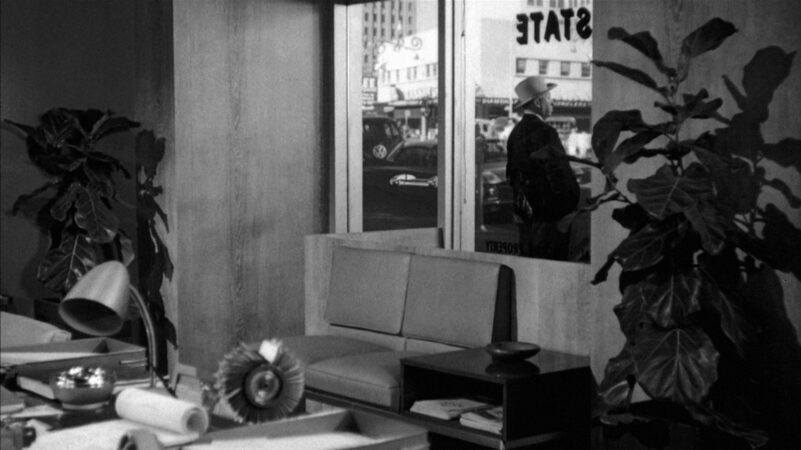
Now it’s your turn
Have more unanswered questions about Psycho? Are there themes or motifs we missed? Is there more to explain about the ending? Please post your questions and thoughts in the comments section! We’ll do our best to address every one of them. If we like what you have to say, you could become part of our movie guide!

